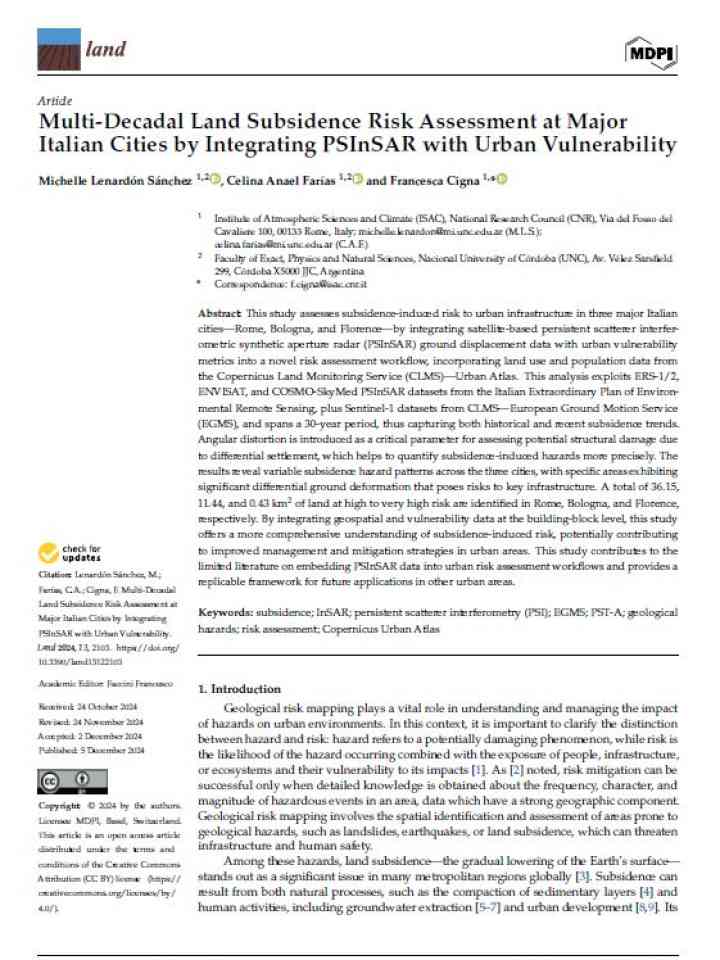Multi-decadal land subsidence risk assessment at major Italian cities by integrating PSInSAR with urban vulnerability
This study assesses subsidence-induced risk to urban infrastructure in three major Italian cities—Rome, Bologna, and Florence—by integrating satellite-based persistent scatterer interferometric synthetic aperture radar (PSInSAR) ground displacement data with urban vulnerability metrics into a novel risk assessment workflow, incorporating land use and population data from the Copernicus Land Monitoring Service (CLMS)—Urban Atlas.
The results reveal variable subsidence hazard patterns across the three cities, with specific areas exhibiting significant differential ground deformation that poses risks to key infrastructure. A total of 36.15, 11.44, and 0.43 km2 of land at high to very high risk are identified in Rome, Bologna, and Florence, respectively. By integrating geospatial and vulnerability data at the building-block level, this study offers a more comprehensive understanding of subsidence-induced risk, potentially contributing to improved management and mitigation strategies in urban areas. This study contributes to the limited literature on embedding PSInSAR data into urban risk assessment workflows and provides a replicable framework for future applications in other urban areas.
Explore further
